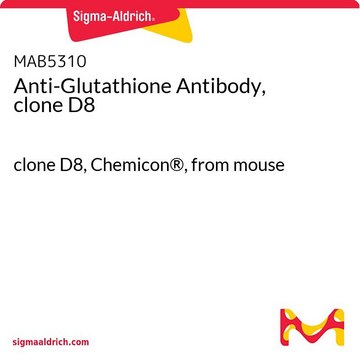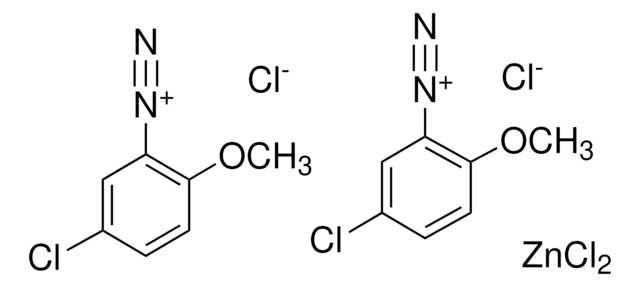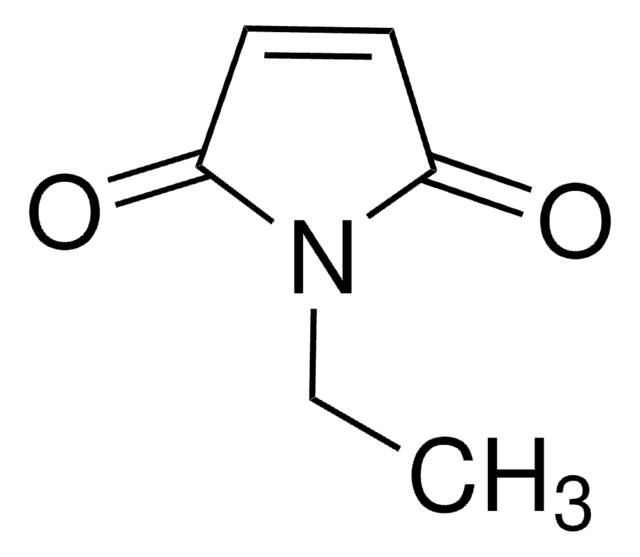MAB3194
Anti-Glutathione: N-ethylmaleimide adduct Antibody, clone 8.1GSH
clone 8.1GSH, Chemicon®, from mouse
About This Item
FACS
ICC
IHC
WB
flow cytometry: suitable
immunocytochemistry: suitable
immunohistochemistry: suitable
western blot: suitable
Prodotti consigliati
Origine biologica
mouse
Livello qualitativo
Forma dell’anticorpo
purified antibody
Tipo di anticorpo
primary antibodies
Clone
8.1GSH, monoclonal
Reattività contro le specie (prevista in base all’omologia)
mammals
Produttore/marchio commerciale
Chemicon®
tecniche
ELISA: suitable
flow cytometry: suitable
immunocytochemistry: suitable
immunohistochemistry: suitable
western blot: suitable
Isotipo
IgG1
Condizioni di spedizione
wet ice
modifica post-traduzionali bersaglio
unmodified
Specificità
Immunogeno
Applicazioni
Immunocytochemistry: 1:100 - 1:500 for assessment of intracellular GSH distribution.
ELISA: 1:100,000 - 1:200,000 to quantify GSH at >2 mM in biological specimens.
Flow cytometry: 1:100 - 1:1,000
Cells were fixed with cold 1% PFA for 5 min and vortexed into methanol (-20°C) containing 5mM NEM (10 min on dry ice) or 10 μM NEM (N-ethyl maleimide) for 30 min at RT.
Optimal working dilutions must be determined by end user.
Positive Control: Peripheral blood mononuclear cells (PBMC) treated with NEM
Neuroscience
Oxidative Stress
Stato fisico
Stoccaggio e stabilità
Altre note
Note legali
Esclusione di responsabilità
Non trovi il prodotto giusto?
Prova il nostro Motore di ricerca dei prodotti.
Codice della classe di stoccaggio
10 - Combustible liquids
Classe di pericolosità dell'acqua (WGK)
WGK 2
Punto d’infiammabilità (°F)
Not applicable
Punto d’infiammabilità (°C)
Not applicable
Certificati d'analisi (COA)
Cerca il Certificati d'analisi (COA) digitando il numero di lotto/batch corrispondente. I numeri di lotto o di batch sono stampati sull'etichetta dei prodotti dopo la parola ‘Lotto’ o ‘Batch’.
Possiedi già questo prodotto?
I documenti relativi ai prodotti acquistati recentemente sono disponibili nell’Archivio dei documenti.
Il team dei nostri ricercatori vanta grande esperienza in tutte le aree della ricerca quali Life Science, scienza dei materiali, sintesi chimica, cromatografia, discipline analitiche, ecc..
Contatta l'Assistenza Tecnica.







